In the ever-evolving world of hiking gear, the solar backpack stands as a testament to human ingenuity. But what is a solar backpack exactly? In this guide, we delve deep into the mechanics, benefits, and usability of solar backpacks, helping you understand why it is a must-have for modern-day adventurers, and a tool that just might save you when hiking solo.
Understanding the Solar Backpack
A solar backpack is not just a storage solution; it is a powerhouse that ensures you stay connected even in the remotest corners of the world. Integrating solar panels with a traditional backpack, it allows hikers to harness solar energy efficiently while on the move.
The Mechanics of a Solar Backpack
Solar backpacks work on a simple principle: they convert solar energy into electrical power through photovoltaic cells embedded in the solar panels attached to the backpack. These cells are responsible for capturing sunlight and transforming it into a power source that can charge various electronic devices, including smartphones, tablets, and cameras.
To get a comprehensive understanding of the solar backpack’s working, you can refer to our detailed guide on the best solar backpacks.
Benefits of Using a Solar Backpack
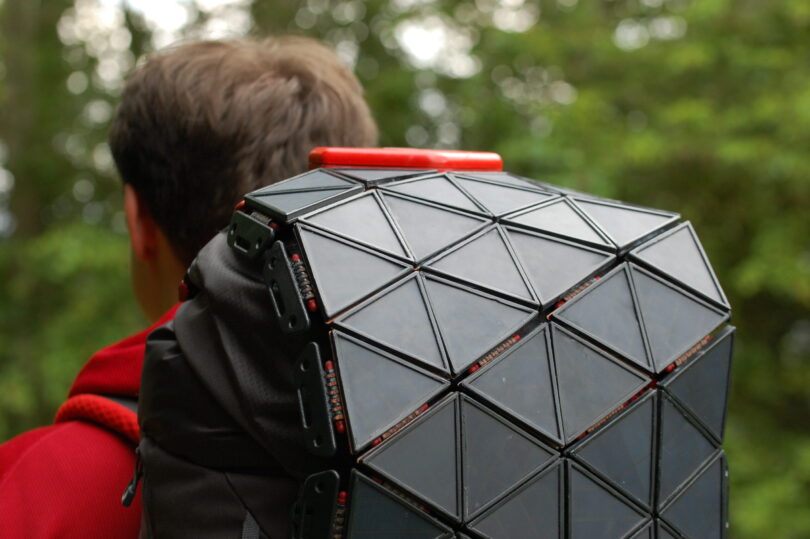
Source: jamesdysonaward.org
Eco-Friendly
Solar backpacks are a green solution, helping to reduce the carbon footprint by utilizing renewable energy. It is a step towards sustainable hiking, where you can enjoy nature while preserving it for future generations.
Convenience
Imagine not having to worry about your phone’s battery life while capturing the breathtaking views on your hike. The solar backpack ensures that your devices remain charged, providing unparalleled convenience.
Safety
In emergency situations, having a charged phone can be a lifesaver. A solar backpack ensures that you always have a power source, enhancing safety during your hiking adventures.
Choosing the Right Solar Backpack
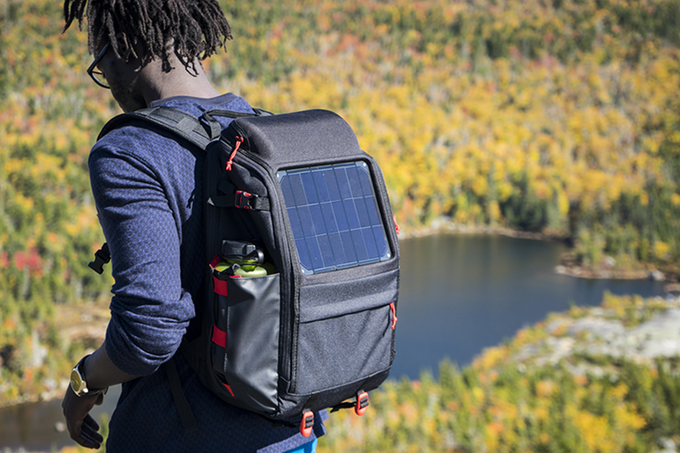
Source: dpreview.com
When selecting a solar backpack, consider the following aspects:
- Solar Panel Efficiency: The efficiency of the solar panels determines how quickly your devices will charge.
- Battery: Some backpacks come with an integrated battery, allowing for energy storage for later use.
- Durability: Ensure the backpack is durable and can withstand harsh weather conditions.
- Capacity: Depending on your hiking needs, choose a backpack with sufficient storage space.
For a more detailed guide on choosing the right solar backpack, consider reading this specific guide with technical reviews on the Best Solar Power Bank for Backpacking.
The Importance of Solar Power Banks in Hiking
Embarking on long hiking trips necessitates careful consideration of your power storage solutions. This is where solar power banks come into play, serving as a reliable source of energy in the wilderness.
Why Consider Power Storage?
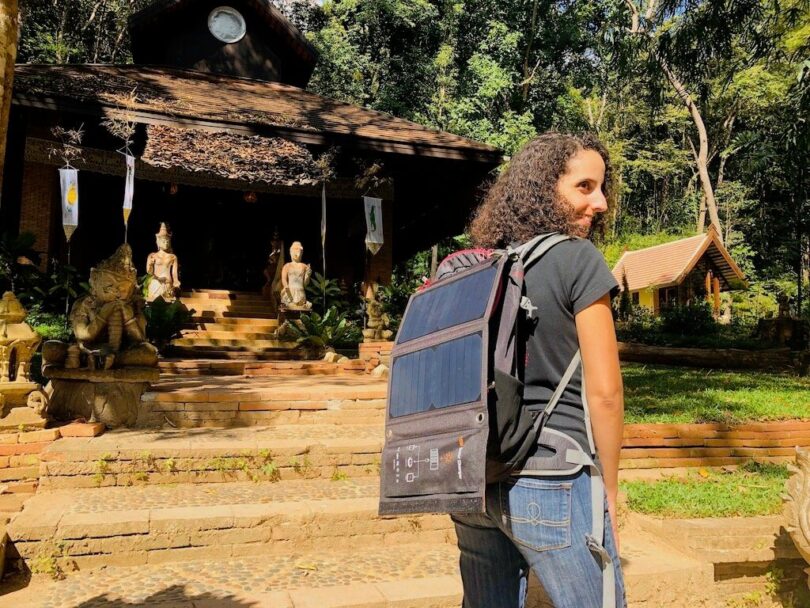
Source: mynali.ca
Being out in the wild with no power source can be a daunting scenario. Solar power banks ensure that you have a backup power source to recharge your devices, making your hiking experience worry-free.
Having a solar power bank while backpacking and hiking can be a game-changer, enhancing your outdoor experience by providing a reliable source of power for various uses. Here are some of the various uses of having a solar power bank during your adventures:
Device Charging
A solar power bank ensures that your essential devices such as smartphones, tablets, and GPS devices remain charged. This is crucial for staying connected, navigating unfamiliar terrains, and accessing important information online.
Emergency Situations
In emergency situations, having a charged phone can be a lifesaver. A solar power bank ensures that you can make emergency calls or send messages even when you have been out for several days.
Lighting
Many power banks come with built-in LED lights that can be used as a flashlight in the dark, helping you navigate or find items in your backpack during nighttime.
Camera and Photography Equipment
If you are a photography enthusiast, a solar power bank will ensure that your camera batteries remain charged, allowing you to capture beautiful moments without worrying about running out of power.
Keeping Entertainment Devices Powered
For those who like to unwind with music or an e-book during their breaks, a solar power bank can keep your entertainment devices powered, enhancing your outdoor experience.
Charging Wearable Devices
If you use wearable devices to monitor your health and fitness levels, a solar power bank can keep these devices charged, helping you keep track of your physical activity even on long trips.
Choosing a Quality Solar Power Bank
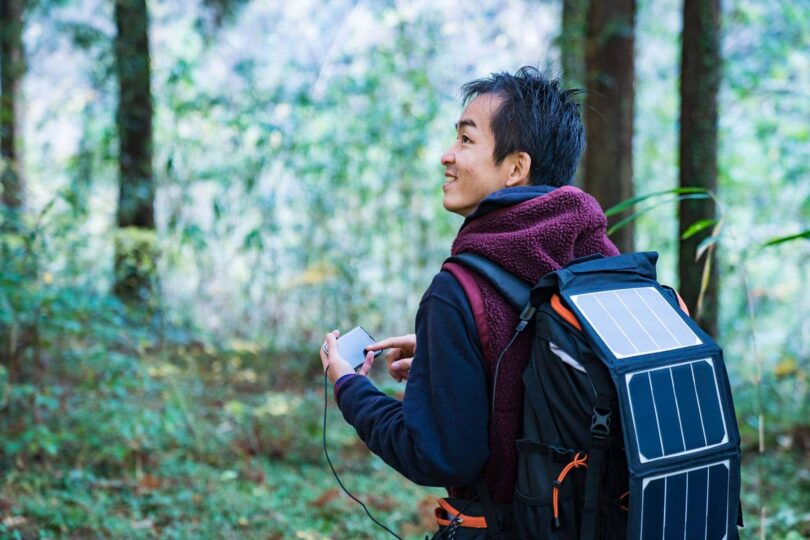
Source: mehrdarou.com
Selecting a quality solar power bank is a critical decision for all hikers, from beginners to the most experienced ones. It involves considering factors such as capacity, charging speed, and durability.
There are many great resources available online to aid you in making an informed decision. Platforms like Batten Safe offer comprehensive guides, including articles on choosing a Power Bank for Backpacking, helping you choose the right product that suits your hiking needs.
Tips for Using a Solar Backpack
- Sun Exposure: For optimal performance, ensure that panels receive adequate sun exposure.
- Device Compatibility: Before purchasing, check if the backpack is compatible with your electronic devices.
- Maintenance: Regular maintenance will enhance the lifespan of your solar backpack.
7 Things to consider when choosing a Solar Backpack for Hiking
When choosing a solar backpack, there are several critical factors to consider to ensure it meets your needs, especially for outdoor activities such as hiking. Here are the most important things to look for:
1. Power Bank
Ensure the backpack comes with a power bank that suits your energy storage needs. Consider the charging speed and the variety of devices it can charge, including smartphones, tablets, and torches.
2. External USB Ports
A good backpack should have multiple external USB ports to cater to different charging needs. Ensure it can accommodate the specific devices you intend to use.
3. Size and Weight
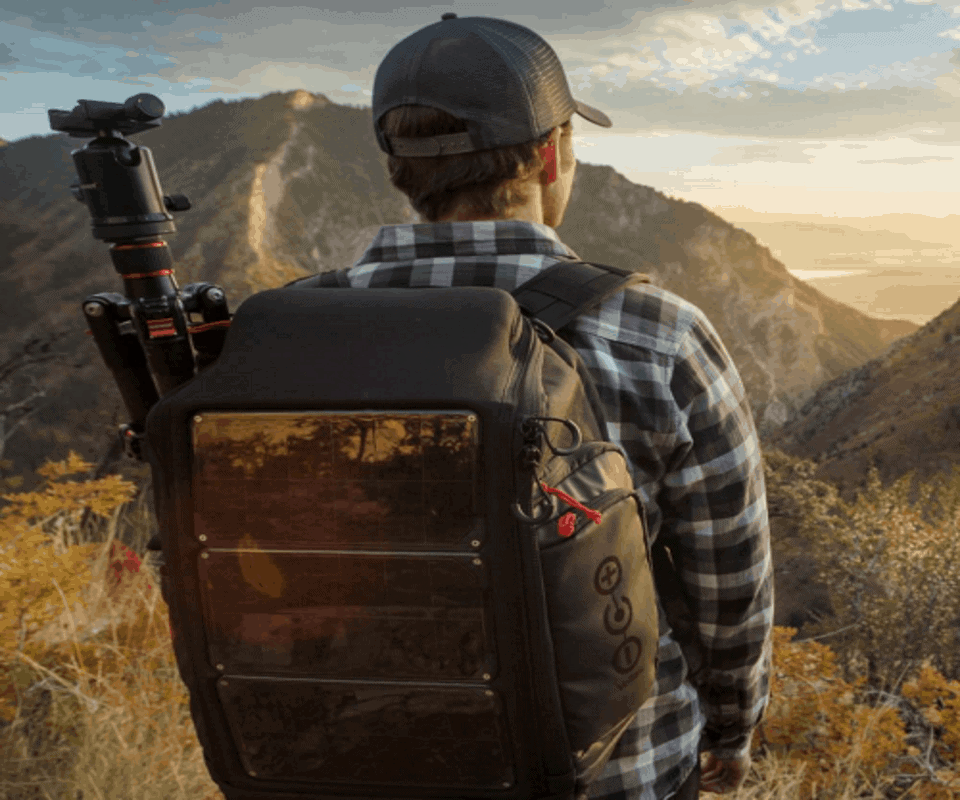
Solar Backpack Size and Weight
The backpack’s size and weight are determined by the solar panel and battery bank incorporated in it. While larger panels and batteries offer more power, they also increase the backpack’s weight. Generally, solar backpacks offer a capacity of 20-25L, providing sufficient space for your essentials and electronic devices.
4. Compartments
While not as critical as other features, the number and design of compartments are still important. They represent the backpack’s storage capacity, helping you organize your belongings efficiently and find items quickly.
5. Solar Panel
It is the heart of the backpack. Pay attention to its specifications, particularly the wattage, which affects the charging speed. Panels with higher wattage (between 7-10 watts) offer faster charging. Consider whether the solar panel is removable, providing flexibility in its use.
6. Durability
Given that these backpacks are often used outdoors, they should be built to withstand wear and tear, including resistance to water to protect the electronic devices stored inside.
7. Design and Additional Features
Some backpacks offer unique features, such as being expandable to accommodate extra equipment, having a stylish design suitable for various occasions, or coming with a rain cover for added protection against bad weather.
Remember to choose a backpack that aligns with your specific needs, considering the balance between power capacity, storage space, and durability. It is advisable to opt for a well-known brand to ensure reliability and efficiency in performance.
Wrapping Up
Understanding what a solar backpack is and its numerous benefits is the first step in upgrading your hiking gear. It is not just a backpack; it is an eco-friendly powerhouse that brings convenience and safety to your hiking adventures. As you venture into the great outdoors, a solar backpack stands as a reliable companion, ensuring you remain connected while embracing the beauty of nature.







